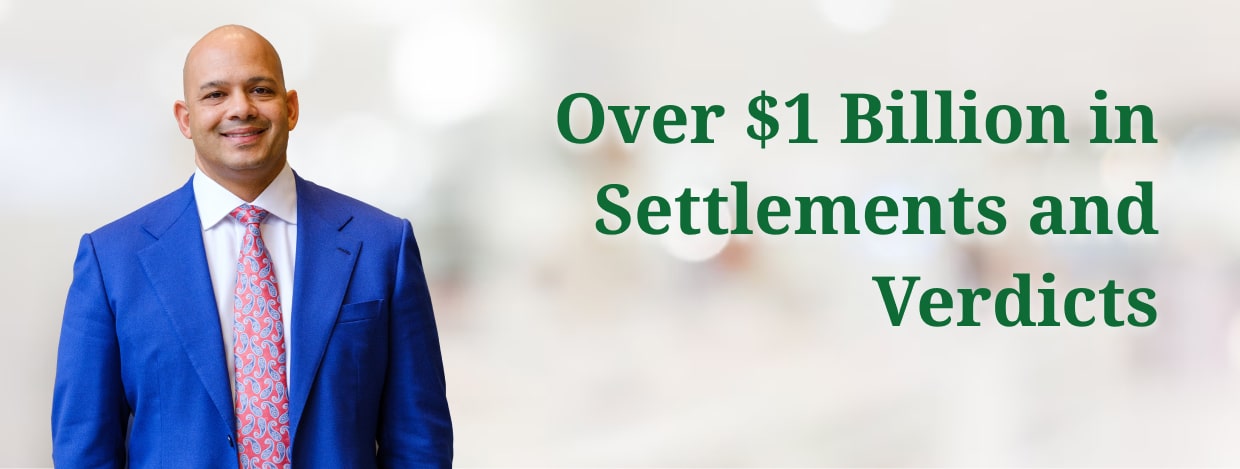
Suffering from any type of injury can seriously impact a victim’s ability to live a normal life — sometimes temporarily, sometimes permanently — and many of these impacts have a financial implication whether or not there is a clear dollar value associated with it. These are known as “damages” in the world of personal injury. Each damage entitles a victim to compensation if their injuries result from someone else’s negligence, recklessness, and, in some cases, criminal malice. When a victim files an insurance claim, they are working through a personal injury claim, and whether or not they realize it, they are entitled to a host of damages that the insurance company typically does not voluntarily offer payments for.
Working with a personal injury attorney can help a victim in several ways, including the benefit of getting experienced and professional legal support for getting fair payment. Calculating damages after a personal injury can be complicated for people unfamiliar with the world of tort law (the type of law that applies to personal injury cases), which is even more true when the inexperienced individual is trying to recover from serious injuries at the same time. The insurance companies know this and use it to their advantage to settle any given claim as inexpensively as possible.

Table of Contents
Seeking The Compensation You Rightfully Deserve
Trying to get the money you deserve in a personal injury claim is complicated, not only because the insurance companies are focused on settling your claim for less than you deserve but also because tort law is incredibly complex. Things like damage caps, multipliers, non-economic damages, and a variety of other personal injury-specific concepts can quickly overwhelm someone trying to struggle through their injuries, manage their day-to-day obligations, and return to some sense of normalcy after a serious accident that someone else caused. Personal injury attorneys understand this fact and focus on alleviating the pressures on their clients so that they can prioritize recovery while an experienced professional is fighting for the money they are truly owed.
Economic Damages
Economic damages are the basis of most personal injury cases and seek direct 1:1 compensation for measurable financial impacts (this distinction will make more sense once we discuss non-economic damages) from an accident that qualifies as a personal injury. The most common economic damages are things like the cost of medical care, impacts on a victim’s income, other work-related issues, and things like the cost to repair or replace personal property that was damaged or destroyed during the accident. Economic damages are never capped because they seek repayment for impacts that come with set and measurable values associated with them that were lost due to the accident. If a victim accrues $500,000 of medical bills, it would not be fair or reasonable to limit the amount that they can recover due to a cap since these are actual losses and impacts they have experienced.Non-Economic Damages
Non-economic damages are more complex than economic damages simply because they seek financial repayment for impacts of an accident with no set or measurable dollar values. Things like the trauma a victim experiences during their accident, the psychological issues such as ongoing fear, anxiety, or depression stemming from the accident or resulting injuries, or issues like the loss of enjoyment are all genuine issues from an accident, but as you can imagine, are much more challenging to assign a dollar value to. Non-economic damages are calculated by various methods where an attorney will take these abstract impacts and reach a clear calculation of how much money a victim is owed. Quantifying these damages is confusing, and insurance companies will use this as an opportunity to deny calculations submitted by a victim; however, personal injury attorneys have years of experience both quantifying and negotiating these damages and will be able to handle this entire process on your behalf.Multiplier Method
The multiplier method takes all of the non-economic damages a victim has suffered into account and then assigns a number along a scale (typically 1.5 - 5) that indicates the aggregate severity of the damages. When the number is determined, it is then multiplied against the total economic damages to reach a dollar amount that the victim is entitled to for these abstract impacts. Economic losses of $100,000, paired with a multiplier of 3x, will result in non-economic damages of $300,000. An attorney needs to assign a multiple that they can defend through negotiations because the insurance company will rarely agree to the first set of calculations in a victim’s demand letter. If an insurance adjuster or judge on the case believes that the non-economic demands are extortionate or unreasonably high, this can seriously impact the rest of the case as the victim, and their attorney have not shown that they are willing to go through the process in good faith. This is why it is important to work with a reasonable and experienced attorney who will help you seek the maximum amount you are truly owed.Per Diem Method
The per diem method for calculating non-economic losses is another helpful way to assign a dollar value to these impacts. This method assigns an amount per day that a victim is owed and multiplies this cost by the number of days they suffer from the non-economic damages. For example, if an attorney determines that a victim is owed $150/day for their damages, and they suffer these damages for an entire calendar year, then the calculations will be $150 x 365 = $54,750 in non-economic damages. The choice to use a per diem or multiplier method is complicated, and your attorney will use whichever will help you receive the most money possible. However, some states impose caps, or limits, to the amount of non-economic damages that a victim can seek.
Are There Damage Caps in Florida?
Damage caps are, as the name implies, caps on the amount of money that a victim can seek for non-economic damages. Again, economic damages are not capped because there is no subjectivity in their calculator: economic damages seek a 1 to 1 repayment for realized losses, while non-economic damages assign values to abstract, subjective impacts. As such, a victim who has suffered from $500,000 of economic damages and then assigns a 5x multiplier to their non-economic damages will be seeking (5 x $500,000) $2.5 million in non-economic damages.
Medical Malpractice Caps
Florida used to have damage caps on medical malpractice non-economic damages that limited to $500,000 against individual practitioners and $1 million for wrongful deaths stemming from medical malpractice. Still, these caps were removed when an appeals court found that they were a violation of the Equal Protection Clause in the Florida Constitution. There are no longer damage caps for any non-economic damages in Florida, but this does not mean that a victim can seek any amount of money that they choose. Making a reasonable request for compensation, backed with supporting evidence and a strong case for why this amount is what you deserve, will be essential to reaching a settlement or award that accurately compensates you.Punitive Damage Caps
Punitive damages are separate from economic and non-economic damages (collectively known as compensatory damages) because they are intended to punish the at-fault party. In contrast, compensatory damages are intended to compensate the victim for measurable losses. Punitive damages are awarded by a judge or jury and will not be included in demand letters or settlement negotiations. If your attorney believes that you are entitled to punitive damages, they may choose to file your case with the Florida courts without attempting to resolve your case through settlement negotiations. Punitive damages in Florida are capped at 3x the total amount of compensatory damages or $500,000 (whichever is greater). There are a number of specific instances where these caps are increased to 4x the compensatory damages or $2 million, or there are no caps at all. These specifics are laid out in the Florida Statutes and Constitution. A cap is increased to $2 million or 4x compensatory damages if “Where the fact finder determines that the wrongful conduct proven under this section was motivated solely by unreasonable financial gain and determines that the unreasonably dangerous nature of the conduct, together with the high likelihood of injury resulting from the conduct, was actually known by the managing agent, director, officer, or other person responsible for making policy decisions on behalf of the defendant” per Statute 768.73.2(b). Damage caps are waived entirely in the event that “... the fact finder determines that at the time of injury the defendant had a specific intent to harm the claimant and determines that the defendant’s conduct did harm the claimant” per Statute 768.73.2(c).Making Sense Of Your Damages
Before worrying about damage caps, you and your attorney will need to go through and calculate the actual amount that you are owed for your compensatory damages and then decide whether or not your chances of being awarded punitive damages seem likely. Our team is available for a free consultation, so we encourage you to request yours today. We will go through the many specifics of your situation and determine the most appropriate path forward to get you the money you are rightfully entitled to after suffering from injuries that someone else caused.
Personal Injury Practice Areas
Car Accident
Truck Accident
Uber Accident
Scooter Accident
Bicycle Accident
Boating Accident
Medical Malpractice
Wrongful Death
Slip and Fall
Construction Accident
Jet Ski Accident
Workers Compensation
Catastrophic Injury
Pedestrian Accident
Pool Accident
Premises Liability
Bus Accident
Motorcycle Accident
Dog Bite Accident
